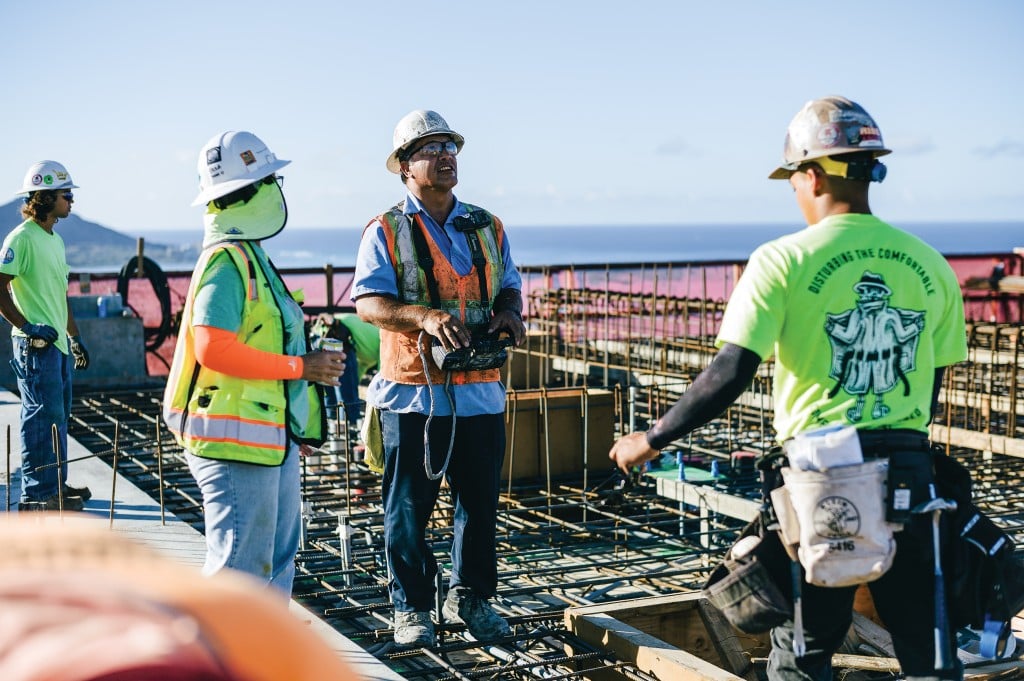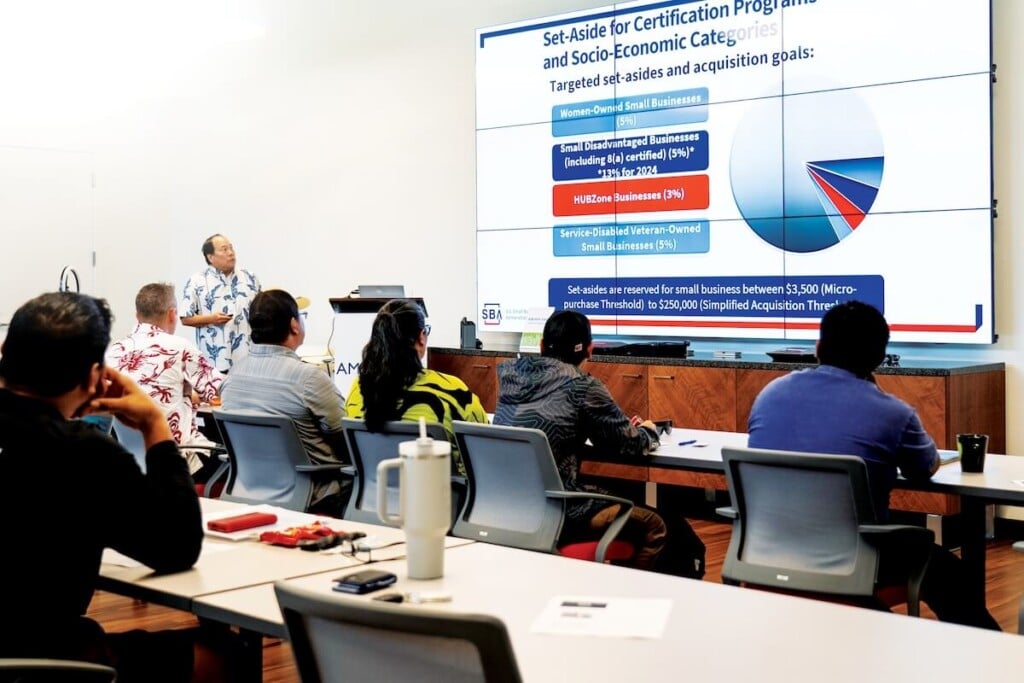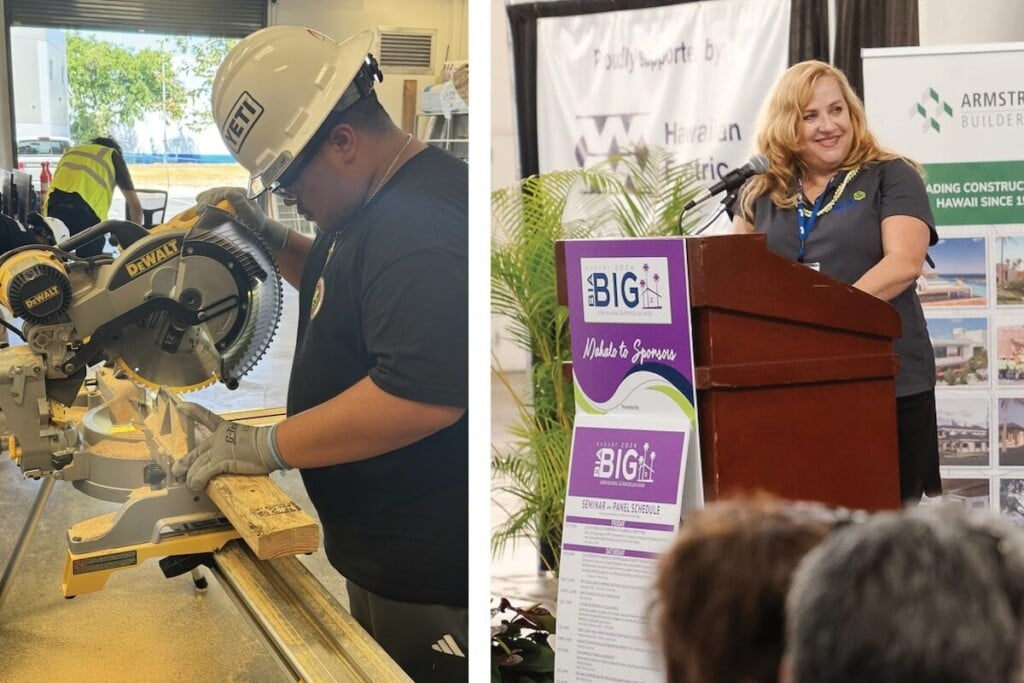Construction Industry Outlook 2018

a message from
Swinerton Builders
Some like it flat
When it comes to floors, how flat is flat? That’s not a Zen koan — it’s serious business, if you’re building a warehouse. In fact, a person walking across a warehouse floor might not notice if the level changes by a few centimeters. But even a slight difference can cause big problems down the line. “If it’s not perfectly flat, and you’re stacking materials up, there’s a chance it could lean over and fall,” says Mark Tacazon, marketing manager for Swinerton Builders.
The Honolulu contractor specializes in floor flatness, and recently produced some of the highest flatness levels ever recorded in Hawaii, when it was building a warehouse for a major medical supplier. The company specified that flatness was a top priority at the outset of the project. “They’re in the business of precision, so it had to be accurate, and it had to be flat.” Aside from keeping storage secure, a flat floor supports the overall stability of the structure, and can also be important if a warehouse uses robots or automated systems to retrieve items.
Getting a floor flat can be harder than it sounds. While concrete floors were historically leveled manually, Swinerton’s secret weapon is a concrete laser screeding machine. The tool automatically measures the flatness of the surface and sweeps over the wet concrete with a leveler to produce a smooth, even layer — think of a Zamboni machine for concrete. “It’s faster, and the quality is better,” says Tacazon. “That’s the difference-maker there, that and our exceptional concrete craftsmen.”






